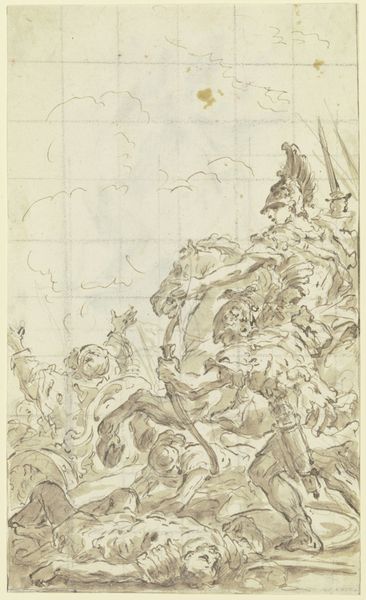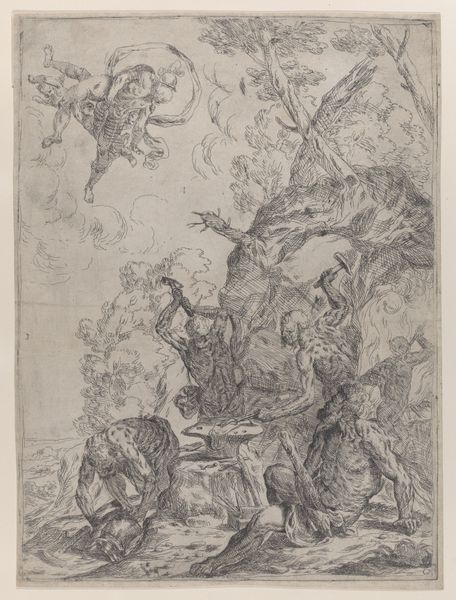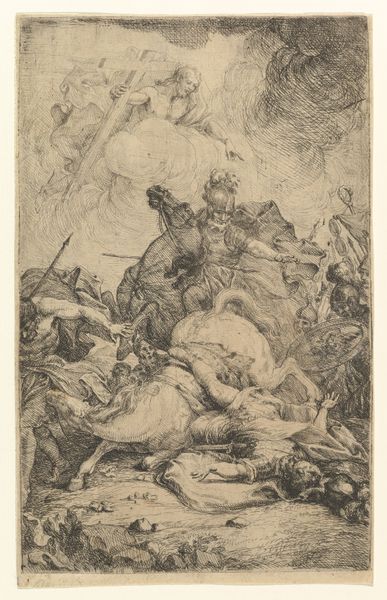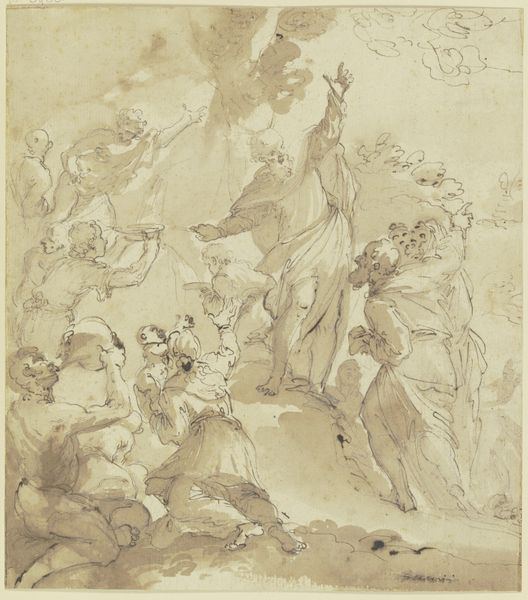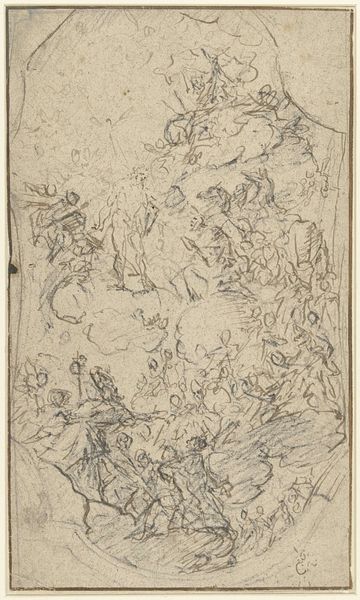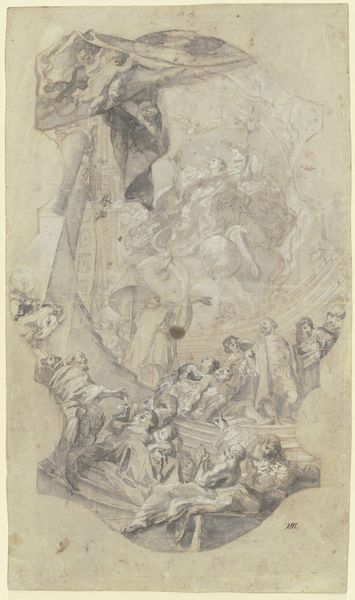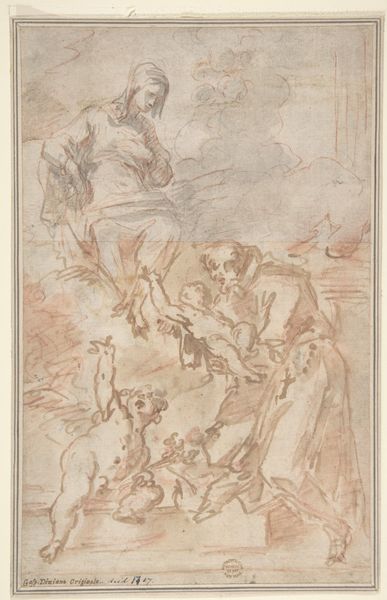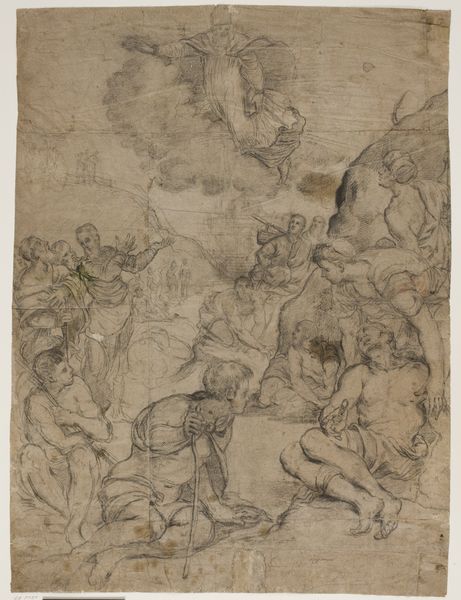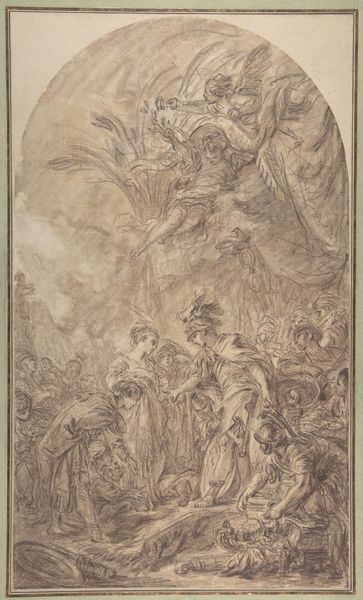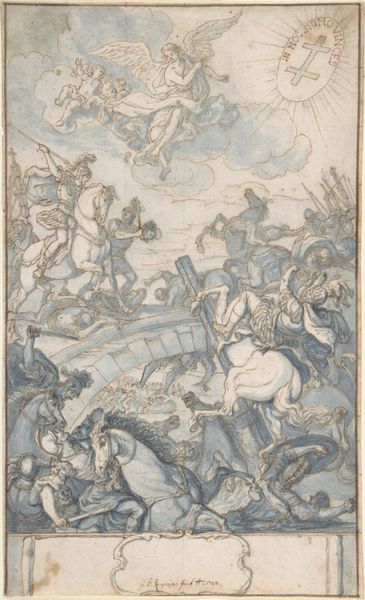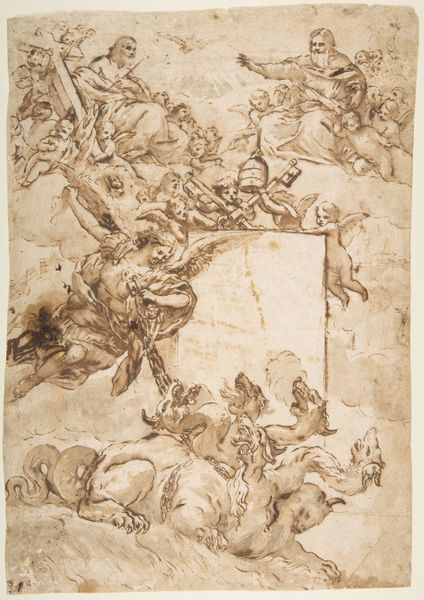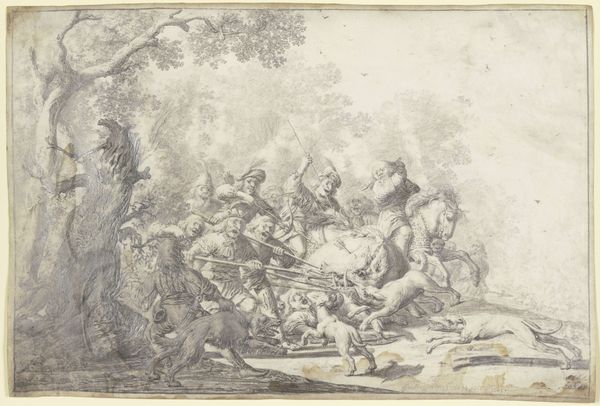
drawing
#
drawing
#
allegory
#
baroque
#
figuration
#
history-painting
Dimensions: Overall: 21.6 x 16.8 cm (8 1/2 x 6 5/8 in.) support: 23.4 x 18 cm (9 3/16 x 7 1/16 in.)
Copyright: National Gallery of Art: CC0 1.0
Editor: Here we have "The Triumph of the Trinity," also known as "The Gloria," a drawing by Francesco Solimena. There's such dynamism in what appears to be a preliminary sketch, capturing figures swirling upwards. How would you interpret the historical significance of this piece, given its title and seemingly allegorical subject? Curator: Solimena’s piece needs to be understood within the context of the Counter-Reformation's emphasis on the power and glory of the Church, using art as propaganda. Consider the Baroque period itself: a theatrical aesthetic designed to inspire awe. Is this just a religious image? Or do you see elements speaking to the power structures of its time? Editor: I see your point; it definitely isn't just religious. There is an imposing hierarchy embedded here, in which we could analyze the patron's involvement to further the message to be presented. The selection of figures, the placement of the Trinity at the apex…everything reinforces authority. What role do you think preliminary drawings like this one played within the artistic and political landscapes of the Baroque era? Curator: Such drawings served as crucial tools. Beyond the artist’s planning, they were often presented to patrons for approval. The degree of intervention that patrons or institutions exercised over artistic production at that time shapes the images we have inherited. Can you see, even in a quick sketch, evidence of potential changes or negotiations? Editor: Now that you mention it, there are some figures that seem less defined, like perhaps they weren’t decided upon yet, so that feedback could still be incorporated? This has been incredibly enlightening! I always viewed these works purely through a religious lens, but understanding the art’s function as a negotiation between the church and the artist is invaluable. Curator: Indeed, remembering the socio-political forces at play allows a deeper appreciation of even the subtlest sketches.
Comments
No comments
Be the first to comment and join the conversation on the ultimate creative platform.
